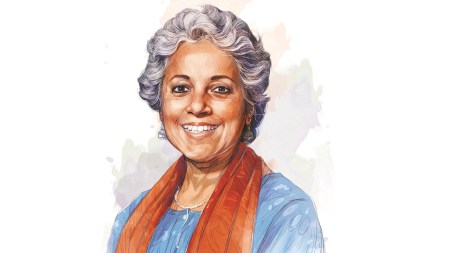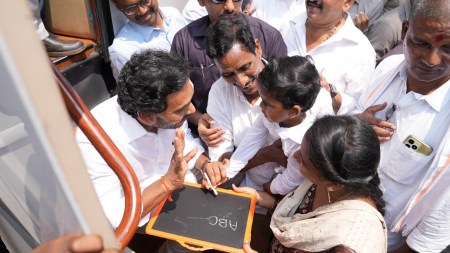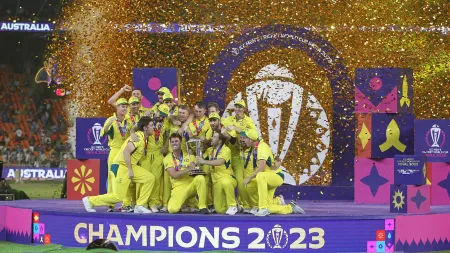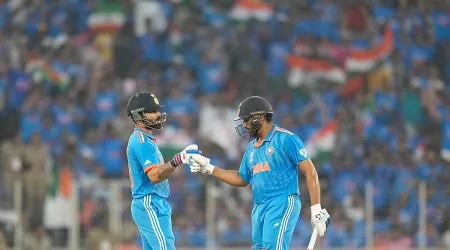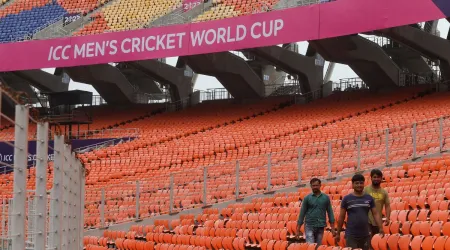- India
- International
The left-field move: Angel Di Maria wants his piece of destiny
Switched to the left flank, Di Maria created opportunities, had his hand in both Argentine goals and shed tears of joy
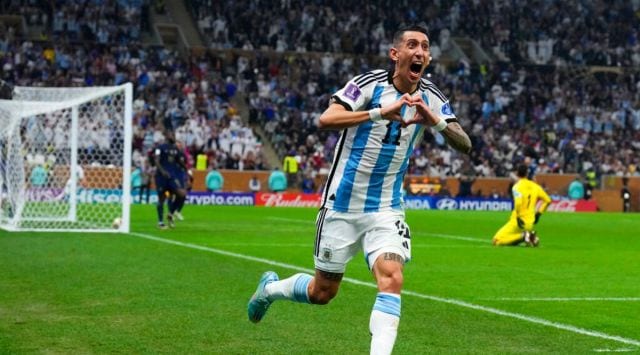 Argentina's Angel Di Maria celebrates scoring his side's second goal during the World Cup final soccer match between Argentina and France at the Lusail Stadium in Lusail, Qatar, Sunday, Dec. 18, 2022. (AP Photo/Natacha Pisarenko)
Argentina's Angel Di Maria celebrates scoring his side's second goal during the World Cup final soccer match between Argentina and France at the Lusail Stadium in Lusail, Qatar, Sunday, Dec. 18, 2022. (AP Photo/Natacha Pisarenko) Thirty-six minutes into the 2022 FIFA World Cup final, Argentina’s Angel Di Maria had tears in his eyes. It had been a troubled tournament for the 34-year-old, missing much of it due to a quad injury. It promised to be a similar lacklustre finish for Di Maria as it had been in 2014, when he missed the final due to injury, and watched his country lose to Germany in extra time.
This time around, however, Argentina needed their ‘final specialist’ – having scored the winner of the 2021 Copa America final and 2022 Finalissima – and he stepped up. Di Maria won the penalty for the first goal, and scored the second to give Argentina the 2-0 lead in the final.
Modern football, and its European interpretation that has become the accepted tactical scripture, has altered the role of the traditional winger. Wide players are often expected to play as narrow forwards in the inside channels as the full backs overlap ahead of them. Di Maria’s performance against France was evidence that the traditional role can still do plenty of damage.
The Juventus winger stuck to the touchline, often in acres of space, took on players one-on-one, and in a traditional role as the left-footer playing on the left, whipped in delivery after delivery. In doing so, he produced the decisive moments of ingenuity.
The first was a moment of individual inspiration. Getting the ball in space and taking it down the channel on the left, isolating Ousmane Dembele and playing him like a fiddle – beating him with ease and then getting his back to him before drawing a naive foul to win the penalty.

The second was a moment of clinical finishing at the end of a sensational collective move.
Messi’s two-touch flick into the path of Julian Alvarez, played first time by him and then by Alexis Mac Allister, cropped right onto his left-foot as he side-footed home to give his side the 2-0 lead. The tears began flowing during the celebrations.
The narrative around his national side had always been tailored around the larger-than-life figure of Lionel Messi, yet it is easy to forget the major role Di Maria has played in Argentina’s domination of tournament football recently – reaching five finals in eight years. Di Maria had announced that the 2022 World Cup will be his last with Argentina. That it was time for the younger generation to take over. It’s safe to say he signed off in style.
Dominating the left flank
The only match Di Maria and Julian Alvarez have started together was the group stage meeting with Poland, where Di Maria played on the right and Alvarez left in a front three, allowing the team to create overloads down both wings.
When the starting XI was announced, it seemed coach Lionel Scaloni had gone for a similar lineup, especially considering France’s conservative approach is similar to that of Poland’s. Scaloni had other plans, instead going for a 4-4-2 lineup to match France’s four-man midfield off the ball.
This game plan was effective in two main areas. The first was that it allowed the combative Rodrigo De Paul, usually a central rather than wide midfielder, to double up on the right alongside full back Nahuel Molina and keep Kylian Mbappe quiet for most of the game.
The second was allowing Angel Di Maria to be present in acres of space down the left wing, and switching the play out to him from midfield every single opportunity they got. With Alvarez’s darting runs across the defensive line, France defender Jules Kounde had to constantly move narrow, meaning space for Di Maria, and even when there was someone marking him, it was the defensively weaker winger Dembele. Di Maria dominated the left flank so prolifically that it led Didier Deschamps to hook off Dembele prior to half time for Randal Kolo Muani.
This subtle tactical change was representative of Scaloni’s approach throughout this World Cup, astutely analysing problematic areas in the opposition and tailoring his team to attack those areas.
Di Maria must have felt that he had done everything to win the game for his country but Kylian Mbappe too wanted his piece of destiny.



